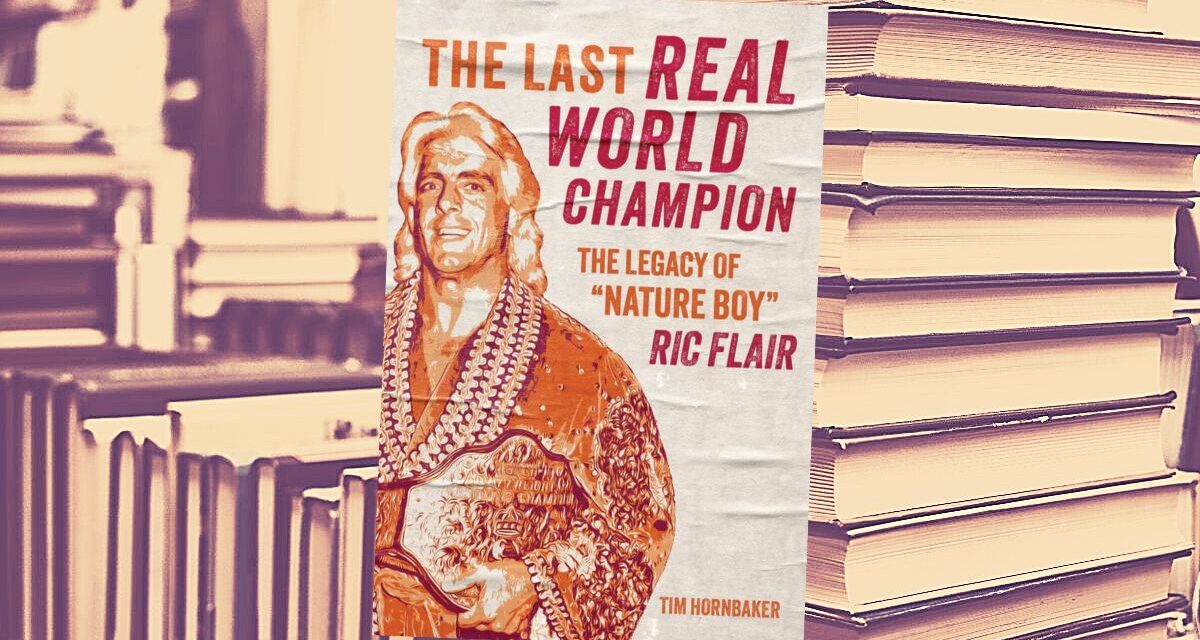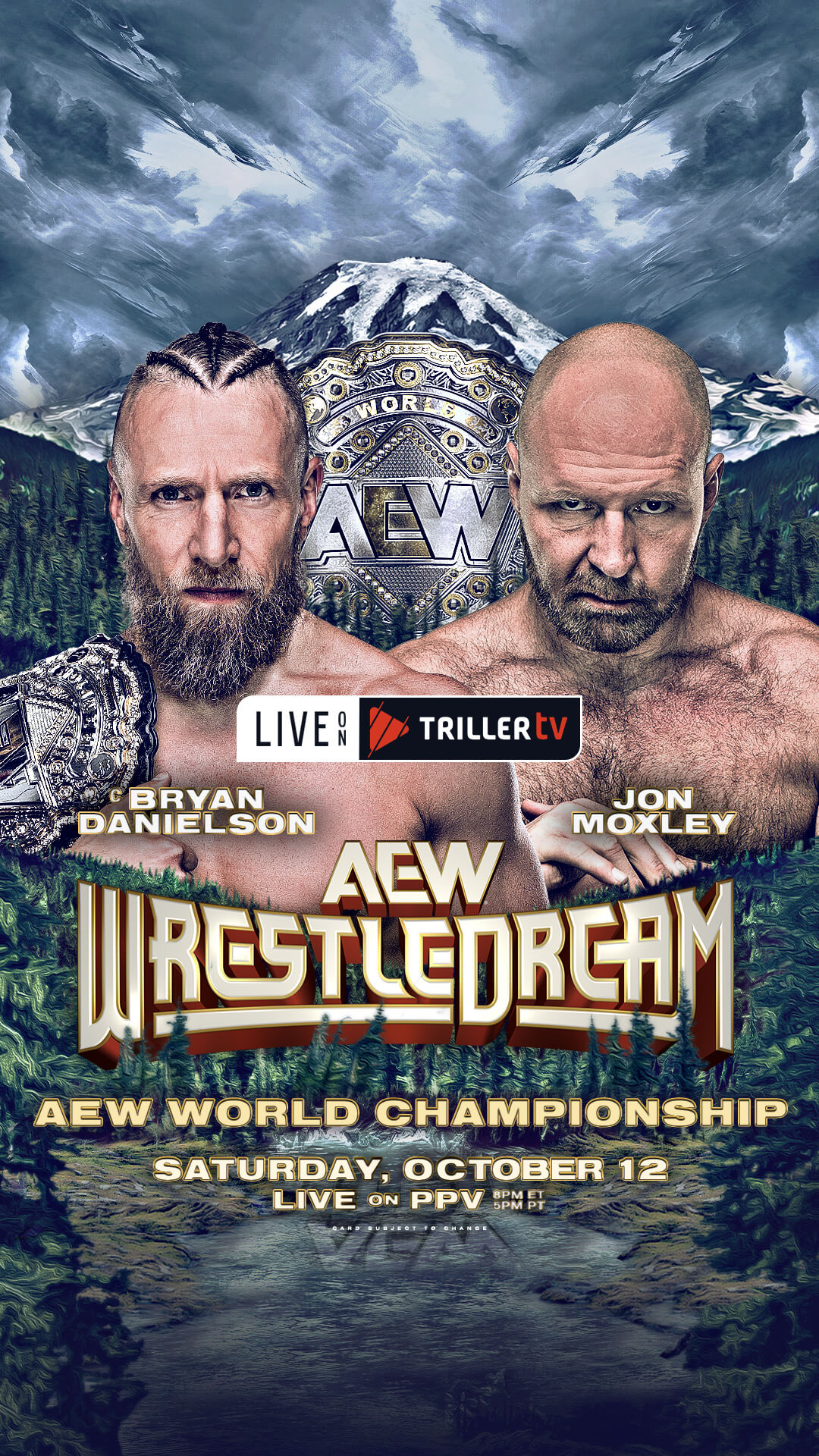Towards the end of his life, the much-revered wrestling historian J Michael Kenyon was hoping he’d have enough time to complete the mammoth project that would serve as the capstone for his years-long obsessions with researching wrestling’s barnstorming past. It was to be a three-volume, 2,000-page encyclopedia of professional wrestling; a chronological study of an entire century, 1882-1983, organized around the careers of the six wrestlers he saw as the sports cornerstone athletes; “Strangler” Evan Lewis, Frank Gotch, “Strangler” Ed Lewis, Lou Thesz, Hulk Hogan, and Ric Flair.
He vacillated on whether to include Hogan and Flair because he saw wrestling as having become just too different as a form of entertainment by the time they began their careers. “The business was pretty much transformed into a TV show by the mid-60s,” he wrote in March 2017. Still, he saw enough of the great barnstormers he so dearly loved alive in their careers that he knew his project would be incomplete without them. Kenyon died two months later in May 2017. While much of his research survives in the WAWLI papers (“Wrestling As We Liked It”), his dreamed-of encyclopedia never materialized.
Another respected historian, Tim Hornbaker, is on his way to completing a version of Kenyon’s project. Being much younger than Kenyon, he’s less bothered by wrestling’s transition from an exclusively live phenomenon to one experienced largely through a screen. He has authored six books on wrestling that total more than 2,000 pages. Each is filled with comprehensive details of specific eras, from the early years of the 1900s through the late 1980s. His latest, The Last Real World Champion: The Legacy of “Nature Boy” Ric Flair, carries him even further by the way of the life of the man Kenyon saw as a link between the past and present, Ric Flair.
Ric Flair is the most important professional wrestler of the last 50 years. Had he not come along, the industry would have survived but it wouldn’t look anything like it does today. Flair made it fun to cheer for the rulebreaker. He reveled in excess and could play the good guy or the bad guy without really changing all that much. Author and one-time editor of Wrestling’s Main Event magazine, Mike Edison, called Flair “the Vladimir Horowitz of the turnbuckle, the Pablo Picasso of the pinfall. … To be in a room with him was to know why they called it professional wrestling.” He’s had two hip hop songs named for him. He’s won the respect of athletes and actors. He can refer to himself in the third person and make it seem a wholly appropriate thing to do. Ric Flair is a man, an idea, a whole way moving through the world.
What he is first and foremost, though, is a wrestler. In that role, his achievements are unmatched. He worked with speed demons and musclemen, stiff workers and graceful high-flyers, all without himself being any of these things. No matter the opponent, he made them look the best they’ve ever looked. Flair won his first heavyweight championship in 1981 and his final, which was between his 16th and 21st, 18 years later. Much is made of John Cena’s impressive number of 16 championships, but as Bleacher Report calculated, Flair’s title runs were all considerably longer, and his total number of days as champion is more than double Cena’s.
He was born in 1949 and raised by a pair of adoptive theatre-loving parents to whom he must have been something of a mystery. His father was a respected physician, and his mother was a college-educated arts booster in Edina, Minnesota. Flair, however, was a sports-loving extrovert. When he wrestled his first professional match sometime in 1972, he was a bulky, would-be power lifter reared on the personalities of Verne Gagne’s American Wrestling Association (AWA). As he matured as a performer, he modeled himself after the more experienced wrestlers he was surrounded by; the gritty physicality of Wahoo McDaniel and Johnny Valentine, the craftsmanship of Ray Stevens, the effortless charisma of Dusty Rhodes. (Flair even once considered changing his name to “Rambling” Rickey Rhodes. Rhodes, thankfully, counseled him against the move.)
It was booker George Scott who struck upon the idea that would change Flair’s life. Scott encouraged him to double down on the bravado that came so easily to him. He also suggested he adopt the gimmick of the “Nature Boy,” which, as popularized by Flair’s predecessor “Nature Boy” Buddy Rogers, meant an emphasis on braggadocio, swagger, and, above all, the in-ring skills to back it up. Scott is a rightfully celebrated figure, and his recognition of Flair’s potential at such an early point in his career may have been his most significant contribution.
The rest is history. The bleached hair, the robes, the signature cry of “Wooo.” His remarkable recovery from the 1975 plane crash that almost ended his career as it was just getting off the ground. Now-legendary feuds with Sting, Harley Race, the Von Erich brothers, and Ricky Steamboat. The move to the then-World Wrestling Federation in 1991, as part of which WWF head Vince McMahon brought Flair in with his gimmick fully intact. It was perhaps McMahon’s way of showing respect, or perhaps he realized that he just couldn’t improve upon what Flair had already brough to life. Either way, the result was Flair’s twice winning the WWF championship and the broadening of his appeal to a whole new generation of fans.
He is the first of wrestling’s true greats to have much of his work widely available on film but even with the vast library of matches and interviews that are available, much of his best work from the 1970s has been lost or destroyed.
His appeal, though, owes as much to something that only lives on in stories and rumors. Flair’s out-of-the-ring antics are inseparable from the work he did in front of paying audiences. In the 1980s, he was the unrelenting id to Hulk Hogan’s humorless superego. Flair was famous for closing down bars (often picking up the tab), for his lavish spending on clothes and jewelry, and for his exploits with women. Famous because he told you about it all, week after week in improvised monologues that put to shame what passes for modern mic work. He didn’t need a script writer to tell him to dub himself “Space Mountain,” or to rhyme “limo ridin’” with “jet flyin’” and “wheelin’ dealin’” with “kiss stealin’.” He built for himself the persona of a man living an endless party not because he was instructed to, but because his life really was an endless party. And while he didn’t exactly invite you to it, he hardly shut you out, either.
All of this came with incredible costs. Tax problems, unpaid debts, and broken friendships and marriages are parts of his story that need to be addressed. Hornbaker digs into all of these, and he has a knack for obtaining government records that help ground his coverage of in-ring angles in the ice-cold dollar and cent transactions of everyday life.
Flair did not participate in the book, which leaves an impossible hole for Hornbaker to fill. But with his great respect for the wrestlers whose lives he covers and his desire to create a complete picture of wrestling’s past, The Last Real World Champion serves as a critical companion to Flair’s own books. It goes a long way to completing the picture of Flair’s life and career, and places him in time as an essential figure in the arc of pro wrestling’s ongoing evolution.
RELATED LINKS
- Apr. 9, 2023: Wooo! Ric Flair biography to set the record straight
- Buy The Last Real World Champion: The Legacy of “Nature Boy” Ric Flair at Amazon.com or Amazon.ca
- Ric Flair and family story archive
- Tim Hornbaker’s Legacy of Wrestling website
- SlamWrestling Master Book List


